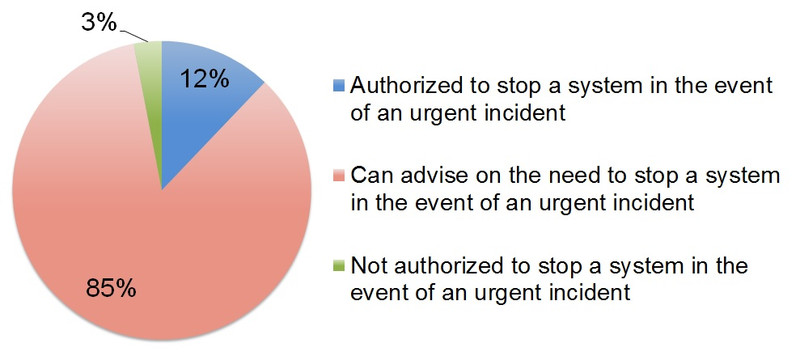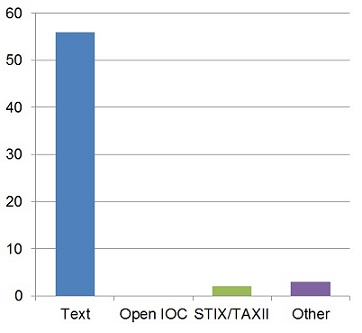Fact-finding Report on the Establishment and Operation of CSIRTs in Japan
Hello, this is Misaki Kimura from Watch and Warning Group.
JPCERT/CC conducted “Survey on the Establishment and Operation of CSIRTs in Japan” in the end of 2015. Following the Japanese report released in 2016, we have just released the English version of the report on JPCERT/CC website to share the outcomes with the information security community member all around the globe. Although the basis of social composition, culture, organizational constitution and so on may differ in each economy, we hope that this document will serve as a useful reference in terms of establishing a CSIRT or comparing the situation with those organizations in overseas.
Here in this blog will cover an executive summary of the report.
Background of the survey
Cyber attacks in recent years have become increasingly diverse in terms of their aims, targets, and TTPs (Tactics, Techniques, and Procedures) used that the impact can be large enough to shake the foundation of a business. One approach that is drawing attention is to establish a Computer Security Incident Response Team (CSIRT) that will serve as the linchpin of an organization to effectively handle security incidents. Cybersecurity Management Guidelines released from Ministry of Economy, Trade and Industry in December 2015 also referred to the need to establish CSIRTs, and this has been boosting the number of CSIRTs in Japan.
Cyber security communities, including the CSIRT community, are quite active in Japan. Nippon CSIRT Association (NCA) is the venue for local CSIRTs to come together for information sharing and joint activities, which has 232 member organizations (as of May 2017). JPCERT/CC conducted the survey targeting 66 organizations which belongs to NCA with an aim to assist those who wish to establish a new CSIRT by compiling the facts of CSIRT activities in various local organizations. The survey took place in December 2015, by means of a questionnaire and interviews, covering questions on organizational structure, scale, functions, policies and other various aspects of CSIRTs. Here below will introduce some interesting findings described in the report.
Items to be defined upon establishing a CSIRT
Business activities, scales, department structures, and anticipated risks differ according to the organization. For this reason, based on the results of the survey, the following six items were identified as matters that organizations should define upon establishing an internal CSIRT.
- Scope of services provided by CSIRTs
- Authority granted to CSIRTs
- Deployment and members of CSIRTs
- Point(s) of contact (PoC)
- Reporting structure to effectively communicate the effects of CSIRT activities within the company
- Periodic review of CSIRT activities
Among these, I would like to highlight a few findings of the survey, which are considered noteworthy for organizations in overseas as followings;
Scope of services provided by CSIRTs
A CSIRT is required to receive, review and respond to various incident reports. Therefore, scope of its service such as contents, targets, range of responsibility, and so forth need to be considered.
NCA categorizes services offered by CSIRTs roughly into the following three types: reactive services, proactive services, and security quality control services. Of these three categories, the survey results identified the main services provided by CSIRTs in each category as follows;
- Reactive services
- More than 80% answered "Incident handling," "Issuing security alerts" "Log Analysis" and "Vulnerability handling" are provided to respond promptly in the event of an incident
- Proactive services
- More than 80% answered "Security warning announcement” is provided ahead of an incident
- Nearly 70% answered "Provision of security related information" and "Intrusion detection" are provided to monitor any signs of an attack
- Security quality control services
- More than 70% answered "Conducting awareness raising activity", "Organizing educational programs" and "Consulting security related issues" as a service aimed at increasing the knowledge and skills to respond to cyber security
In some CSIRTs, all of these services are provided whereas some CSIRTs only provide one or two of those. It is not the variety of services they provide that matters to a CSIRT, but the capability to provide the kinds of services that the organization needs.
Also, the results of the survey showed that about 60% of the organizations has documented their service definition, and over 80% of the organizations has defined and documented their security policies that were approved by the management.
Authority granted to CSIRTs
In responding to security incidents, it is necessary as an organization to make appropriate and timely decisions. While CSIRTs are in a position to provide assistance to departments or persons for decision-making, it is important to understand about up to what point a CSIRT authority is granted.
For example, when a system needs to be suspended for risk avoidance in the event of an urgent incident, about 12% of the CSIRTs answered that they themselves have the authority to order the systems to be stopped, while 85% of the CSIRTs answered that they do not have the authority to order but are in a position that allows them to advise on the decision-making.
 |
These results show that not so many organizations possess a strong authority in decision-making. However, some CSIRTs answered in the interview that they do not necessarily need to have such a powerful authority as to suspend systems in order to function effectively as a CSIRT. What matters to them is how effectively can the CSIRT collaborate with the management level to expedite accurate and rapid business decision.
Incident handling and Escalation
In case of an incident, an escalation process must be clearly defined, documented and officially approved to ensure that the incident is directed towards appropriate departments. The result shows that 74% of the CSIRTs have these processes implemented towards management, 52% implemented towards public relations department, and 50% implemented towards legal department. This indicates that CSIRTs are working closely with the management level in case of an incident, but more effort can be taken towards other related departments as well.
Information Sharing
It is essential for CSIRTs to share information and cooperates with other departments not only within the organization but also with other external partners such as other CSIRTs. Joining the information sharing framework allows the team to obtain and respond to a cyber threat in an effective way that it ultimately helps to protect the organization.
The result shows that all the survey respondents participate in more than one framework for information sharing. Specific frameworks that they join are WAISE (Watch and Warning Analysis Information for Security Experts - operated by JPCERT/CC), CCI (Counter Cyber Intelligence - operated by National Police Agency), working groups of Financials ISAC Japan, J-CSIP (Initiative for Cyber Security Information sharing Partnership of Japan - operated by Information-technology Promotion Agency, Japan) and so on.
When asked about the primary methods of expression used for sharing information, all the respondents selected text format. At the time when this survey was conducted (December 2015), some CSIRTs have already implemented STIX/TAXII, which is a globally recognized standard for incident information sharing. The protocol has been gradually accepted by an increasing number of CSIRTs over the two years after the survey.
 |
Information sharing and collaboration requires investment of time and technical resources, however, it benefits by far than negatives. Some of the respondents have said in the interview that information sharing with other CSIRTs enables them to acquire knowledge and exchange insights, which helps to keep up the motivation of their CSIRT members. The importance of building trust relationships with other CSIRTs was also pointed out by other interviewees. They spoke of participating NCA and other community activities had provided opportunities to reframe how they interact with their organizations.
Conclusion
The report points to six items that should be defined at the time of establishing an internal CSIRT. However, it does not necessarily mean that fulfilling all these conditions will ensure its activities live up to the expectations of the organization. For the sake of an internal CSIRT to function effectively, it is extremely important that the team shares information and cooperates with other departments within the organization and other CSIRTs. In addition, through day-to-day operations including exercises and training, as well as responding to actual incidents, we believe that newly established CSIRTs develop into a trusted and indispensable part of the organization.
The full report can be downloaded here:
https://www.jpcert.or.jp/english/pub/sr/2015_CSIRT-survey.html
- Misaki Kimura

